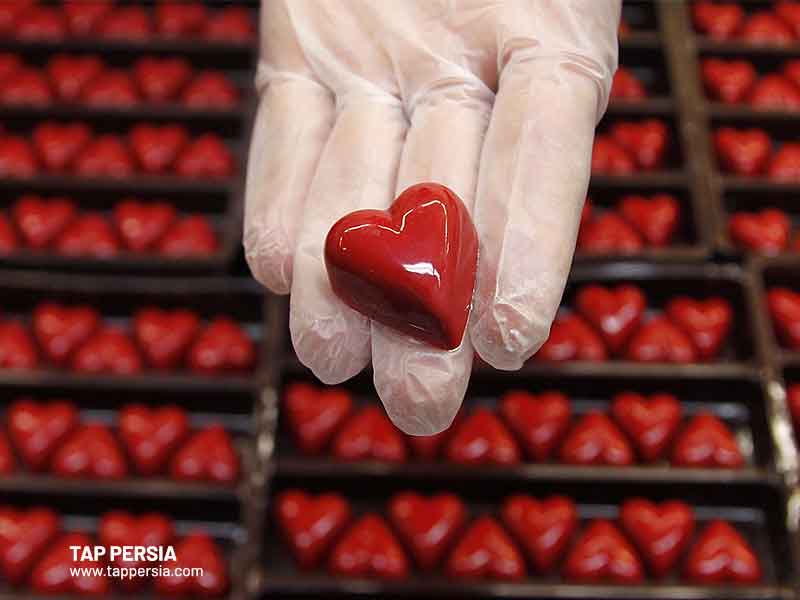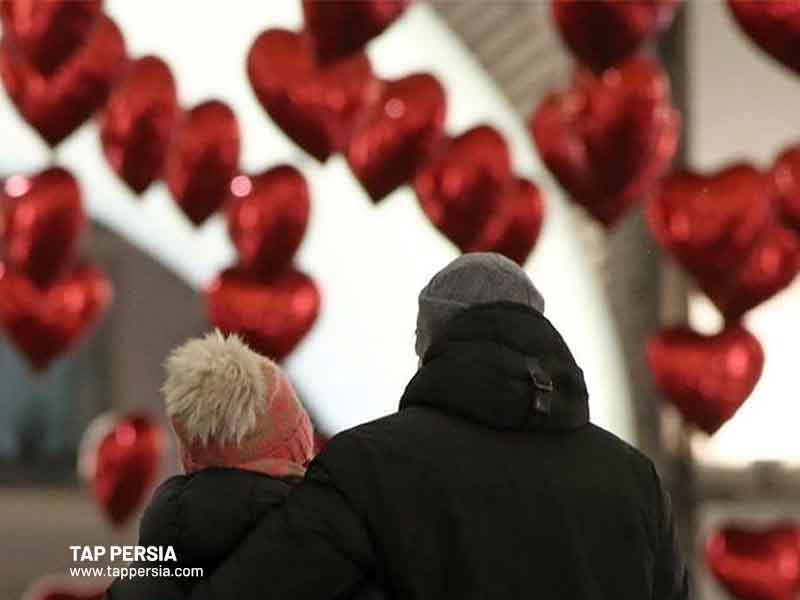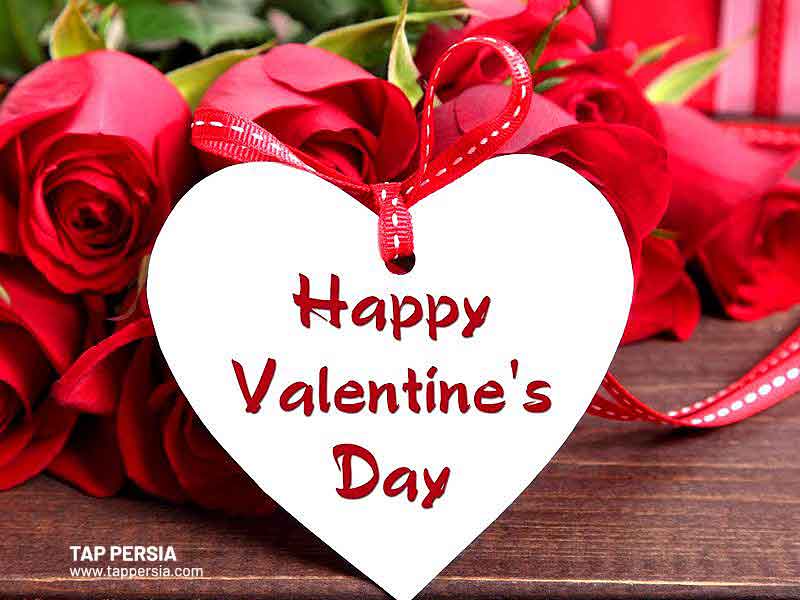
Festivals and celebrations are quite popular in Iran. However, according to their Zoroastrian calendar, they used to have an occasion every day, so it makes sense that they still search for any chance to feast and exchange presents.
Since the east may appear like a faraway region to those in western nations, they may wonder if Iranians celebrate Valentine’s Day in Iran or not. But the reality is that as time passes, people share more and more of the things that all humans have in common. Nowadays, individuals have easy access to a variety of cultures and rituals thanks to social media, and they adopt any that they find appealing or valuable into their daily life.
To learn more about Valentine’s Day in Iran and how Iranians greet one another, continue reading.
What is the story behind Valentine’s Day?
According to the Catholic Church, the name Valentine or Valentinus is associated with three martyred saints. The valentines that were mentioned have many stories attached to them. One of them said that Valentine was a priest who lived in Rome in the third century.
Claudius II, the reigning emperor at the time, thought that single men made better soldiers than those with families. Therefore, he forbade troops from getting married. Valentine defied Claudius II because he thought this edict was unjust.
He kept covertly performing marriages for young couples. When they eventually discovered what he had done, Claudius issued the order to have him put to death. Saint Valentine fell in love with the warden’s blind daughter when he was imprisoned. He wrote her a letter addressed to “Your Valentine” as a final farewell before he was executed.
Since those times, Valentine’s Day has been a time (Persian calendar)when we commemorate one, two, or three saints who symbolized love.
Valentine’s Day in Folk Tradition

Although the European folk customs connected to Saint Valentine and St. Valentine’s Day have been diminished by modern activities emphasizing romantic love, there are still some connections with the start of spring.
Although the custom of sending chocolates, cards, flowers and other gifts began in the UK, Valentine’s Day is still connected to a variety of local customs in England. In Norfolk, a figure by the name of “Jack” Valentine knocks on back doors and leaves gifts and candies for kids. Despite leaving treats, many kids were afraid of this enigmatic figure.
The patron saint of pilgrims and beekeepers, Saint Valentine, also known as Zdravko, was one of the springtime saints in Slovenia. According to a proverb, “Saint Valentine sends the keys of roots,” plants and flowers start to grow on this day.
It is regarded as the start of the first working season in the vineyards and fields. It’s also said that birds get married or become engaged on that day. Valentine is known as the first spring saint in some regions (particularly White Carniola), according to the saying “Valentine is the first spring saint”. Valentine’s Day has only recently been acknowledged as a day of love. The traditional day of love was either February 22 or March 12, which is Saint Vincent’s Day or Saint Gregory’s Day. Saint Anthony, whose day is observed on June 13, was the patron saint of love.
Iranian Version of Valentine’s Day

Every year on February 14, Valentine’s Day, also known as Saint Valentine’s Day or the Feast of Saint Valentine, is observed. In many parts of the world, Valentine’s Day is an important religious and cultural festival of love(Persian culture).
It is shocking to learn that Valentine’s Day is also observed in Iran. Iran is remote from the West because of this. But people, pay heed. Valentine’s Day in Iran is so ordinary that it barely deviates from the holiday’s western counterpart. Since a few years ago, Valentine’s Day has been observed in Iran, where it is widely celebrated among couples.
The origins of Valentine’s Day in Iran may be traced to the Qajar dynasty in the second half of the 19th century, when Naser al-Din Shah Qajar, who did not accompany his wife on his journey to Europe, sent her a card on the holiday. The Iranian museums sell this greeting card.
Valentine’s Day in Iran has grown significantly since the mid-2000s, especially among young people. Conservatives in Iran have, however, also harshly criticized it because they believe it contributes to the development of “decadent” Western culture. Although the event is still widely celebrated as of 2018, authorities have tried to discourage celebrations and place limitations on the sale and manufacture of Valentine’s Day-related items since 2011.
In addition, there have been attempts to replace Valentine’s Day in Iran with the ancient Persian festival of Sepandarmazgan, which occurs around the same time. However, as of 2023, these efforts have likewise been generally unsuccessful.
How is Valentine’s Day Celebrated in Different Cultures?

Giving a card to the wife or sweetheart is the most typical Valentine’s Day custom. Non-romantic individuals give greeting cards to people they admire. “Be my darling?” attempts to identify the sender of this unsigned card to the receiver. The majority of people give gifts to their spouses or other women they care about on Valentine’s Day, which is in keeping with the holiday’s romantic theme. These presents also include chocolates and flowers.
Typically, couples spend their days together in private. One of the most typical events is a romantic supper on the move or a romantic table set at home. The day is made special by couples. Red, which represents passion, is the color most frequently chosen. Valentine’s Day is also a day of numerous marriage proposals in addition to this.
What Does Valentine’s Day Look Like in Iran?

If you wander the streets on that day during Valentine’s Day in Iran, you will notice that everything is in red color. Red hearts and boxes of flowers are everywhere in the many establishments that have changed their decorations. The aura of love permeates everything.
People are content and have such pleasant looks for each other. In the western hemisphere, it’s typical for lovers to greet one another with red flowers and chocolate. But this is a little different. Because Iranian lovers are so kind and generous, they present each other with a red box filled with everything they can fit inside, including flowers, chocolates, dolls, and other gifts.
If it doesn’t fit in the box, don’t be concerned. You don’t need to bring the box. Huge dolls, sometimes the size of a person, are given as gifts by lovers in Iran!
Book sure to make a reservation if you want to have a romantic night out with your soul mate on Valentine’s Day in Iran. On Iranian Love Day, big boxes are exchanged in restaurants and coffee shops by couples with radiant expressions.
Although it may appear that Iranian couples are imitating westerners on Valentine’s Day in Iran, the practice of honoring love on a particular day has deeper roots in Iran than you may realize.
Sepandarmaz, the Ancient Iranian Love Day
The Achaemenid Empire, the first Persian empire, maybe the source of Valentine’s Day in Iran. Every day and month has a unique name in the 30-day Zoroastrian calendar. For instance, the beginning of the month was called Urmozd, the name of God in the ancient Persian religion. A “name-feast” ceremony was conducted when the names of the day and the month coincided. Sepandarmaz, or the fifth day of the month, was thus named.
This ancient Iranian holiday celebrating love is known as Sepandarmazgan or Espandegan. The day is devoted to “Spenta Armaiti,” the planet Earth’s ancient emblem. They held the view that the planet Earth symbolized femininity and love. Because she treats people with kindness and humility and loves them all. Sepandarmazgan was celebrated as both Mother’s Day and the Iranian version of Valentine’s Day in addition to being the national holiday of Iran. Men offered their spouses presents on that day to show their appreciation for their care and support.
In the Achaemenid Empire, women were esteemed in both society and religion. They have their own rights, which is a symbol of the advanced knowledge and comprehension of the time. On the Iranian national calendar, Sepandarmazgan falls just four days after Valentine’s Day. The precise date of this commemoration is the subject of significant debate. According to some scholars, it happens on February 24. Others believe it to be on February 19th. Thus, Sepandarmazgan is the name of Iran’s version of Valentine’s Day.
It is irrelevant when or where we observe a day of love. What matters most is that love is a universal language that everyone can understand. In the complex world we live in, love may bring about peace, justice, and happiness. So always remember to love yourself first, followed by everyone else.
Is Valentine’s Day allowed in Islam?
Islam forbids Valentine’s Day celebrations for a variety of reasons. 1. It is a novel festival for which Islam offers no support. 2. It appears to stimulate love and lust in the wrong ways.




Comment (0)